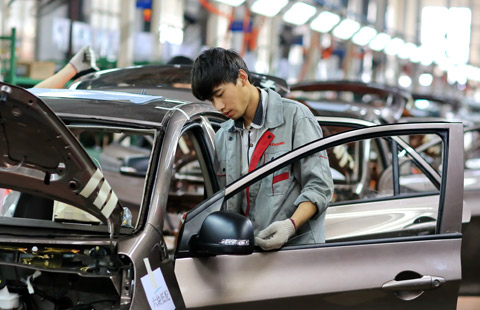Focus on urbanization, Shanghai FTA
Dan Steinbock, research director of international business at the India, China and America Institute in the United States

A1 In China, next-level urbanization will be driven by market forces and coordinated by central government and municipal policies. Commercial projects have an important role to play, but they are just part of the big picture.
Urbanization also requires the expansion of infrastructure and logistics projects, residential projects that offer affordable housing and retail projects that provide services for consumers, businesses and government agencies.
In the past, the focus of property markets was on high-end projects, which allowed local governments to make money through land sales. In that era, wealthy investors fueled Chinese urbanization.
Those times are history. Today, property markets are increasingly driven by middle-class Chinese. In this era, the old business models of private developers and local municipalities no longer work, but they result in excessive debt.
What Chinese urbanization really requires is affordable housing for ordinary Chinese. As a result, local governments require new business models.
A2 Some 15 million rural people move to Chinese cities annually. In China, industrialization fuels urbanization, which attracts investment that creates job opportunities; migrants work in construction projects; property markets expand, creating demand for logistics; new businesses and housing units generate the need for services, and so on.
The key challenge is to provide new entrants and current residents jobs. In practice, it requires hukou (household registration system) reforms, which is likely to be pragmatic and gradual. By 2030, the overall floating population, with most being rural migrant workers, could exceed 300 million. As they gain greater recognition, they will have greater incentive to invest in new home cities.
Misguided urbanization can cause great long-term challenges. In the postwar era, the United States saw the emergence of inner-city slums, while Brazil witnessed the rise of massive favelas.
In both cases, rural migrants flocked into cities but could not find jobs. What made the situation worse was the suburban flight of the original residents and the deterioration of the tax base in inner cities. For now, China has avoided such polarization.
A3 China' s decision to allow Shanghai to create such zone would accelerate growth in Shanghai and underscore the megacity's importance as a regional hub nationwide. It will also speed up financial reforms in Shanghai.
Indirectly, Shanghai's reforms will also foster Chinese urbanization. To support the common Chinese social model, the mainland needs more sophisticated financial services. When people feel the future is more secure, they will consume more. In brief, Shanghai's financial reforms support China's transition toward consumption-led growth.
In a free trade zone, commodities and capitals can be imported, processed and re-exported without intervention of customs authorities.
As Shanghai can experiment with full convertibility of renminbi, it will morph into a global financial hub faster than anticipated. Today, people like to say Shanghai is to become a "mini-Hong Kong". But over time Hong Kong may look like a "mini-Shanghai."

























